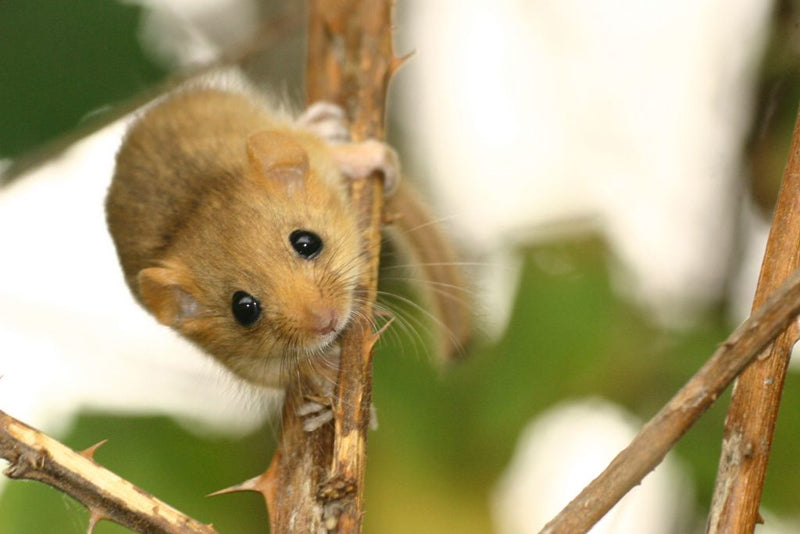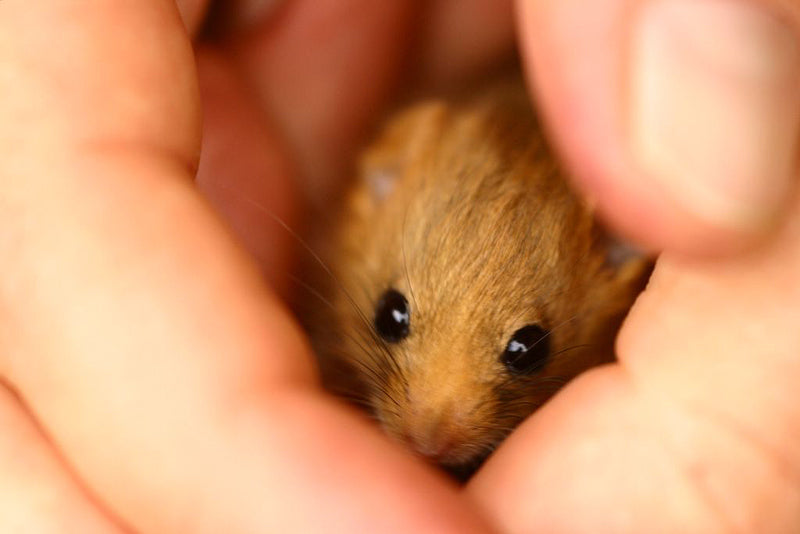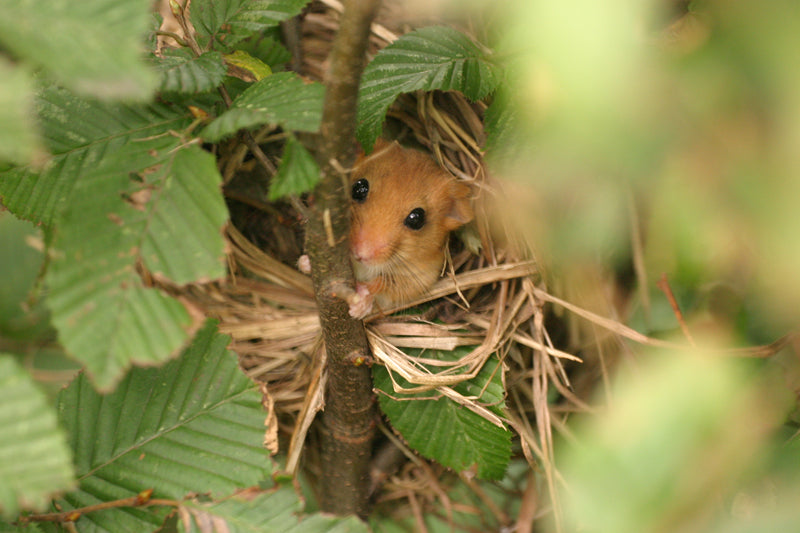Here comes the hazel dormouse
The hazel dormouse is tiny, shy, and usually scurries through dense bushes at night. Therefore, very little is known about this cutest creature among rodents. Thanks to the "nut hunt," however, we can keep track of the graceful dormouse.

Profile
In shape and nature, the dormouse (Muscardinus avellanarius) is similar to theSquirrelclose, but it belongs to the dormouse family. It is a small relative of the dormouse and therefore not a true mouse.
The dormouse is only as large as an adult's thumb, its maximum body length is 14 cm, almost half of which is taken up by the tail. This tail also indicates that the dormouse is not a true mouse at all. In true mice, the tail is thin and almost naked, while in dormice, it is densely furred. It serves as a balancing pole for the climber. The dormouse has large, black, button eyes, small, round ears, and soft yellowish to reddish-brown fur with a white patch on its throat and chest.
Dormice live up to 6 years; a proud age for such a small mammal!
The habitat of these graceful creatures extends from southern Sweden to the Mediterranean and east to Russia. They are more commonly found in low mountain ranges, but the largest populations are in the southern and southwestern regions of Europe. Due to habitat loss, the hazel dormouse is considered endangered in many places.
The dormouse life
Dormice love dense, tiered deciduous or mixed forests with plenty of undergrowth and constant sunlight. These sedentary, solitary creatures live on the ground and in the branches of trees and shrubs. During the day, these cute little creatures are rarely seen; they prefer to lie hidden in their artfully crafted spherical nests and sleep. The nests are found in tree hollows, nesting boxes, or between brambles; usually at a low to medium height of 2 to 4 meters. They only go out to forage for food at dusk. These small rodents are incredibly adept at climbing. Since they are true arboreal creatures, they easily climb the thinnest branches like monkeys. Thanks to the swiveling ankle joints on their hind legs, they can even hang upside down. They share this ability with squirrels. When threatened, they hover among the branches or jump to the ground with their legs spread. As soon as the temperature frequently drops below the critical value of around 15°C, the dormouse is triggered to hibernate and begins to look for protected winter quarters. They build their winter nests mainly under moss or the loose layer of leaves. They sleep for almost seven months of the year, from October to April. They curl up tightly and wrap their tails around their bodies. They lead a life of reduced energy: their body temperature drops to around 4°C and their heart beats only slowly. Over the winter months the animal loses around half its weight. The rodents, which reach sexual maturity after a year, mate shortly after hibernation. After a few weeks the female gives birth to between two and seven young. They stay with the mother for six to eight weeks, then the offspring go their own way.
Menu
As their name suggests, dormice love hazelnuts. This fatty nut is their absolute favorite food! They also enjoy seeds, buds, catkins, blossoms, and berries (especially blackberries and raspberries), as well as small insects like aphids and caterpillars. Unlike normal mice, they don't store up food for the winter; instead, they spend the autumn eating themselves into balls so they can survive their long hibernation. They double their body weight within a few weeks. Since dormice can't digest grass or roots, they sleep through the cold winter months, when there is usually nothing else to eat, huddled deep in the leaves. They don't wake up again until April, when blossoms, buds, and pollen provide their first food.

The Nut Hunt
In 2004, the first "Great Nut Hunt" was held in Saxony. The aim was to learn more about the distribution of the endangered hazel dormouse, and nut hunting is a very effective method for tracking down the hazel dormouse. Later, nut hunters also went on the hunt in Schleswig-Holstein, Hesse, and Rhineland-Palatinate. Nibbled nuts help track down the hazel dormouse. First, they nibble a tiny hole in the nutshell. Then, while gnawing, they hold the nut in their paws and turn it in a circle while gnawing an almost circular hole parallel to the rim. Typical gnaw marks can then be seen around the hole, reliably proving that a hazel dormouse was at work. This unique nibbling species was discovered in 1980 by the British scientist HG Hurrel and his daughter. Therefore, anyone can go nut hunting, even without prior knowledge, and provide absolutely reliable data on the hazel dormouse population. Children, in particular, enjoy taking on such important research assignments and can be introduced to nature conservation in a playful way. All nuts found are handed in or sent to the respective organizers in the federal states, along with a map showing the locations. The hazelnuts are then examined again by dormouse experts, and the data on the locations are recorded centrally. Contact details can be found atwww.nussjagd.de
TEXT: Victoria Wegner













